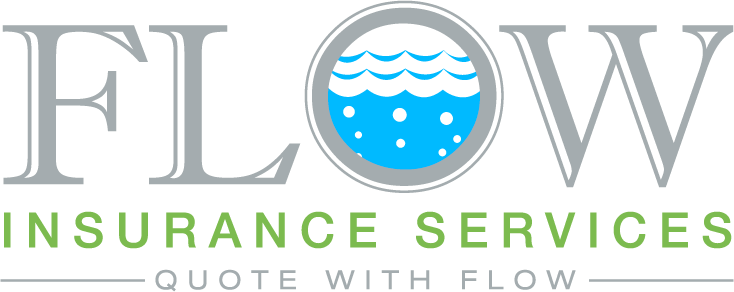31 Jan A Look at Risk Management for Habitational Properties

855-368-5502
A Look at Risk Management for Habitational Properties
By: Adam M. Matheny
Habitational Properties
Habitational properties like apartments, condos, even hotels and motels all have similar property and liability issues. These include fire, flooding and water damage, and slip/fall accidents. While all serious problems, they can be managed effectively with a program of sound management, proper planning, and oversight, along with a regular inspection and maintenance program.

When Things Are Under Control
When you have a property owner with a good business plan and a property manager who cares, losses are likely to be less frequent and less severe. By having an effective inspection and maintenance program in place, it is much easier to spot small problems and make the necessary repairs before they become insurmountable. Most tenants have no idea of the work it takes to maintain a property or what the owner does to keep things going and make improvements. Consider using a monthly newsletter to keep tenants informed.
Causes of Major Losses
There are several causes of significant losses including:
Fire – In many cases fires that could have been nipped in the bud with the appropriate early warning system in place. Without a smoke detector in place, the fire will quickly grow out of control. As a property owner, you should install new batteries in all smoke detectors every six months and replace the detector every ten years.
Plus, it gives you the chance to inspect the property for signs of fire hazards or hazardous behavior. This includes things like using charcoal grills instead of propane or not using candles in safe locations. Overloaded outlets are another major cause of fires according to the National Fire Protection Association (NFPA). Providing your tenants with the pamphlet on fire prevention produced by the NFPA can help guide them in the right direction.
Water – Protecting your property from many forms of water damage start with routine maintenance inspections. Things like stains on the ceilings and walls, puddles on the floor, plaster that has become soft, or mold are all signs of a water leak. The sooner you find the leak and fix it, the less the repairs are likely to cost.
The roof is the most common source of leaks, but there are others such as leaky plumbing, appliances like that icemaker in your fridge, the water heater. At any signs of a leak make immediate repairs.
Slips/Trips/Falls – These types of accident can be caused by cracks in the driveway or sidewalk, changes in elevation, settlement differentials outdoors and worn or loose carpets, broken or missing handrails, floors that are uneven. Doing things like painting the curbs with reflective paint, adding steps to the area with elevation changes and adding outdoor lighting can help as can making the necessary repairs indoors as soon as they are reported.
Playgrounds – If any of your properties have a children’s playground, follow the Consumer Product Safety Commission’s Handbook for Public Playground Safety to ensure it meets the highest safety standards.
Swimming Pools – Pools are a very common amenity, but if you want your pool to remain safe for your tenants to use, it has to be maintained appropriately. Your pools must meet local health codes, have the appropriate safety equipment and signage. Your pool should be in a locked enclosure that is open to your tenants and their guests.
Wildfires – Wildfires are becoming more and more common. To protect your property, keep all vegetation cut back from the structures (you should have a clear space of at least 100 feet). Take steps to protect the roofs from fire such as flame-retardant coatings or replace older roofs with new steel, aluminum, or tin.
Building Maintenance and Updates
Your insurance company will probably expect you to ensure critical systems in your properties including plumbing, electrical, HVAC, and of course the roof once your properties reach a set age. This doesn’t necessarily mean you have to replace the affected system completely. Routine maintenance is often considered an update, but in some older buildings may need to go further.
The Electrical System – Periodic inspection by a licensed electrical inspector is considered an update providing everything meets current codes. Older wiring presents a significant fire risk; if the inspector determines it needs to be replaced, a plan needs to be made to do so.
The Plumbing System – A well-maintained plumbing system should last for a very long time. It is very rare that an entire system must be replaced. But, if you have an effective maintenance program in place, problems can be caught and repaired early before they become serious.
The HVAC System – Like the plumbing system, the HVAC system is designed to last for years. Regular inspection and routine replacement of worn parts are considered not only an update but also crucial to a long, trouble-free lifespan.
The Roof – The average roof should last between 15 and 30 years. If possible, inspect the roofs on all properties annually and make any necessary repairs immediately. Make sure gutters, downspouts and drains are kept clear. You can look inside for any signs of leakage as well if the roof is nearing the end of its useful life, schedule to have it replaced.
Keeping the risks at your residential rental properties to a minimum is easily addressed with an effective routine maintenance and inspection plan. Which in turn will help you build a stronger and better relationship with your tenants and encourage them to treat your property with more respect.
Partner With The Best
Flow Insurance Services is a general agency that helps insurance agents place business they don’t have markets for, including high brush fire, private flood, commercial auto, general liability, E&O and habitational. Let us help you write more business!

